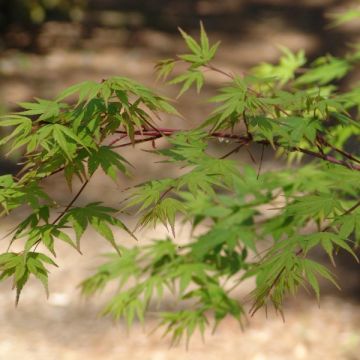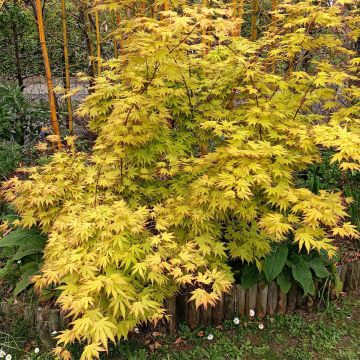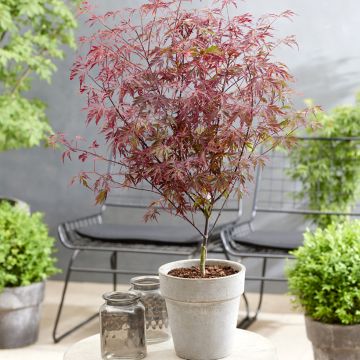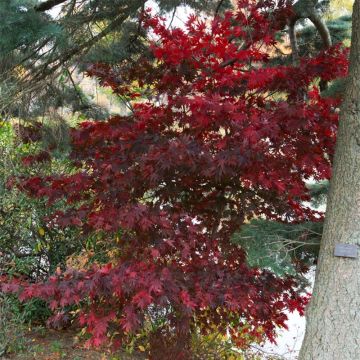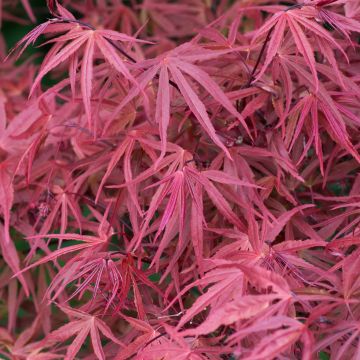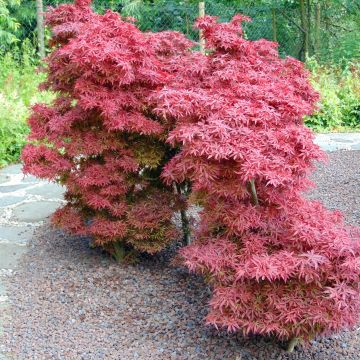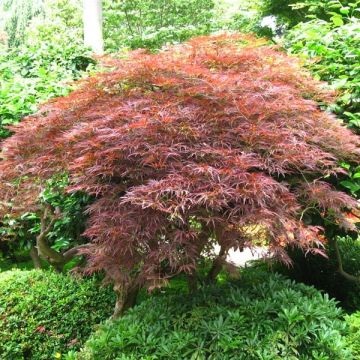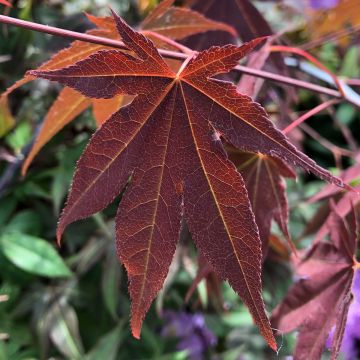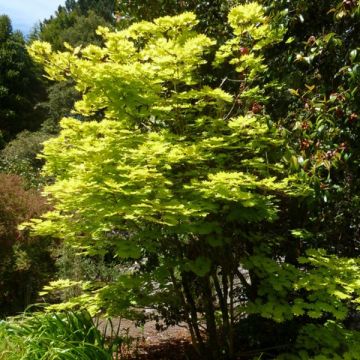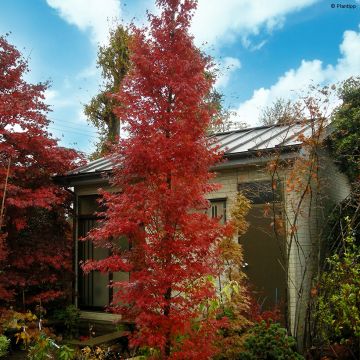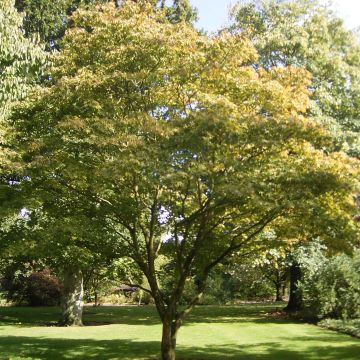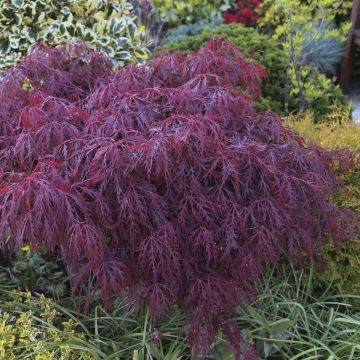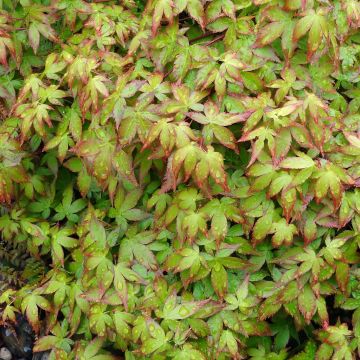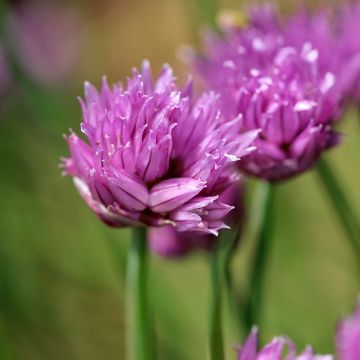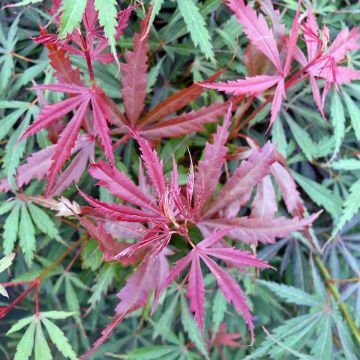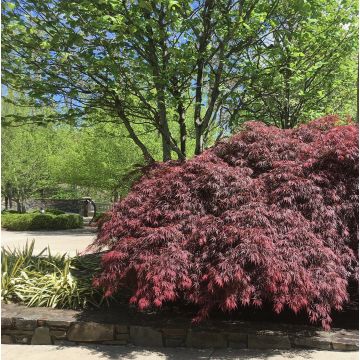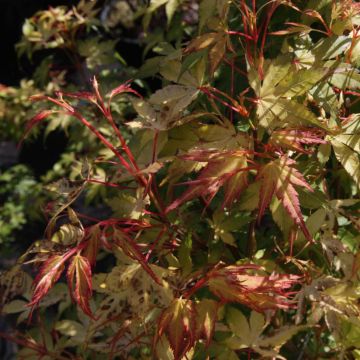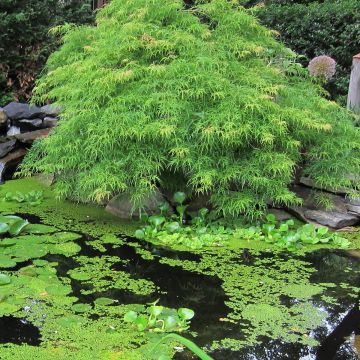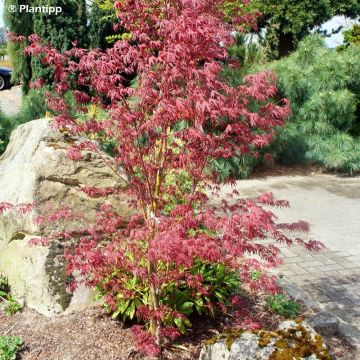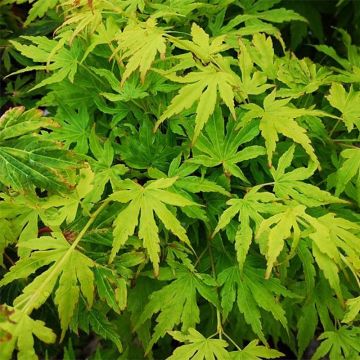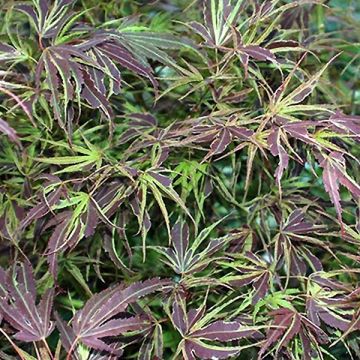Shipping country and language
Your country of residence may be:
Your country of residence is:
For a better user experience on our website, you can select:
Your shipping country:
-
Andorra
-
Austria
-
Belgium
-
Bulgaria
-
Canada
-
Chile
-
Croatia
-
Cyprus
-
Czechia
-
Denmark
-
Estonia
-
Finland
-
France
-
Germany
-
Greece
-
Hungary
-
Iceland
-
Ireland
-
Italy
-
Latvia
-
Lithuania
-
Luxembourg
-
Malta
-
Monaco
-
Netherlands
-
Poland
-
Portugal
-
Romania
-
Slovakia
-
Slovenia
-
Spain
-
Sweden
-
Switzerland
-
United Kingdom
We only deliver seed and bulb products to your country. If you add other products to your basket, they cannot be shipped.
Language:
-
French
-
German
-
Spanish
-
English
-
Italian
My Account
Hello
My wish lists
Log in / Register
Existing customer?
New customer?
Create an account to track your orders, access our customer service and, if you wish, make the most of our upcoming offers.
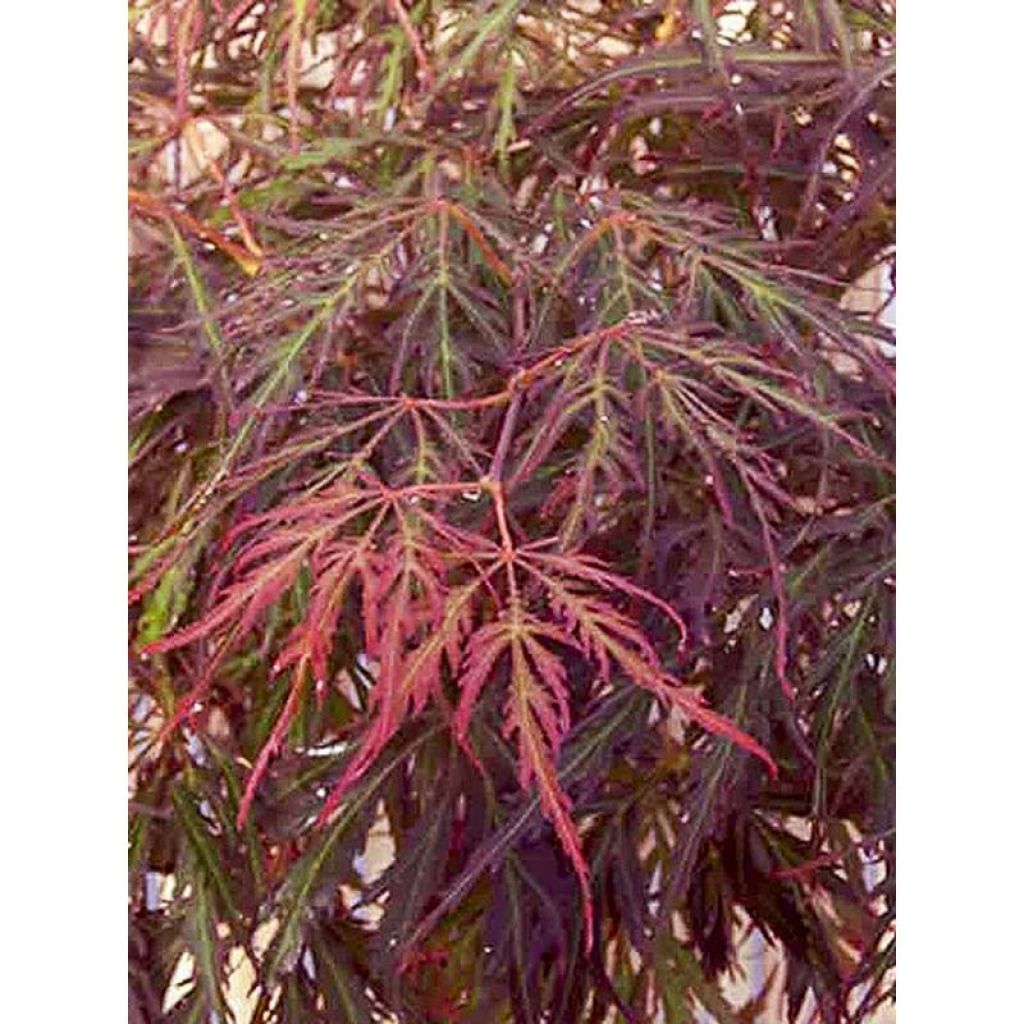

Acer palmatum Crimson Princess - Japanese Maple
Acer palmatum Crimson Princess - Japanese Maple
Acer palmatum Crimson Princess
Japanese Maple, Palmate Maple
Why not try an alternative variety in stock?
View all →Order in the next for dispatch today!
Dispatch by letter from €3.90.
Delivery charge from €5.90 Oversize package delivery charge from €6.90.
More information
This item is not available in your country.
Schedule delivery date,
and select date in basket
This plant carries a 24 months recovery warranty
More information
We guarantee the quality of our plants for a full growing cycle, and will replace at our expense any plant that fails to recover under normal climatic and planting conditions.
Does this plant fit my garden?
Set up your Plantfit profile →
Description
The Acer palmatum 'Crimson Princess' is a variety of Japanese maple belonging to the dissectum group, which presents typical features: a horizontally spreading habit with cascading trailing branches and deeply lobed and finely cut foliage. Similar to 'Crimson Prince', it stands out for its more intense and changing leaf colour. The leaves emerge deep purple in spring, then evolve to brick red and bronze-green in summer before turning bright red in autumn. Compact and slow-growing, it is an excellent choice for a large pot on the patio or for a small garden with little direct light. Plant it in a sheltered spot with afternoon sun in rich, light, moist, and slightly acidic soil.
Native to eastern China, Korea, and Japan, the Acer palmatum is the origin of numerous horticultural varieties that compete in beauty. The Japanese palmate maple belongs, like all maples, to the Aceraceae family. It is relatively hardy but dislikes dry and cold winds, scorching exposures, and dry and chalky soils. The 'Crimson Princess' cultivar shows a relatively slow growth like other Japanese maples but proves to be particularly robust. It has a spreading habit and trailing branches. Depending on the growing conditions, it will reach a maximum of 3 m (10ft) in all directions. Its palmate leaves are divided into 7-9 well-separated lobes, finely toothed. Inconspicuous flowering occurs in May-June. The flowers, grouped in small clusters, sometimes produce winged fruits called samaras, measuring 3 cm (1in) long.
The Acer palmatum 'Crimson Princess', with its beautiful foliage and natural elegance, stands out in the garden or when planted in containers on a patio. Extremely decorative from spring to autumn, it deserves a prominent place. The Japanese maple is not strictly a heathland plant, but it prefers soils rich in humus and not too dry. Chinese azaleas, andromedas, hydrangeas, wild camellias, ferns, and heathers will be its most beautiful companions. It can also be trained into a magnificent bonsai in a shallow pot. Combine several varieties of Japanese maples to vary leaf colours and structures, the effect is always stunning at the end of the season. The red, purple, and copper tones blend beautifully with shrubs with golden foliage like false cypresses or the blue-toned foliage of certain large hostas.
Report an error about the product description
Acer palmatum Crimson Princess - Japanese Maple in pictures


Plant habit
Flowering
Foliage
Botanical data
Acer
palmatum
Crimson Princess
Aceraceae
Japanese Maple, Palmate Maple
Crimson Princess'
Cultivar or hybrid
Other Japanese Maples
Planting and care
The Acer japonicum 'Crimson Princess' should be planted in spring or autumn in preferably light, humus-bearing, neutral to acidic, deep, loose and well-drained soil, in a semi-shaded or even shaded position, sheltered from cold and dry winds. The soil should be kept moist with summer mulching if necessary, especially when the plant is exposed to the sun, but should not be waterlogged in winter. Apply a significant amount of organic matter every 3 years to ensure a good humus content in the soil. Mulch and water during hot evenings. Winter pruning should be limited to balancing the branches. Take preventive measures against scale insects and Verticillium, a fungal disease that occurs in heavy and overly wet soil.
Planting period
Intended location
Care
This item has not been reviewed yet - be the first to leave a review about it.
Haven't found what you were looking for?
Hardiness is the lowest winter temperature a plant can endure without suffering serious damage or even dying. However, hardiness is affected by location (a sheltered area, such as a patio), protection (winter cover) and soil type (hardiness is improved by well-drained soil).

Photo Sharing Terms & Conditions
In order to encourage gardeners to interact and share their experiences, Promesse de fleurs offers various media enabling content to be uploaded onto its Site - in particular via the ‘Photo sharing’ module.
The User agrees to refrain from:
- Posting any content that is illegal, prejudicial, insulting, racist, inciteful to hatred, revisionist, contrary to public decency, that infringes on privacy or on the privacy rights of third parties, in particular the publicity rights of persons and goods, intellectual property rights, or the right to privacy.
- Submitting content on behalf of a third party;
- Impersonate the identity of a third party and/or publish any personal information about a third party;
In general, the User undertakes to refrain from any unethical behaviour.
All Content (in particular text, comments, files, images, photos, videos, creative works, etc.), which may be subject to property or intellectual property rights, image or other private rights, shall remain the property of the User, subject to the limited rights granted by the terms of the licence granted by Promesse de fleurs as stated below. Users are at liberty to publish or not to publish such Content on the Site, notably via the ‘Photo Sharing’ facility, and accept that this Content shall be made public and freely accessible, notably on the Internet.
Users further acknowledge, undertake to have ,and guarantee that they hold all necessary rights and permissions to publish such material on the Site, in particular with regard to the legislation in force pertaining to any privacy, property, intellectual property, image, or contractual rights, or rights of any other nature. By publishing such Content on the Site, Users acknowledge accepting full liability as publishers of the Content within the meaning of the law, and grant Promesse de fleurs, free of charge, an inclusive, worldwide licence for the said Content for the entire duration of its publication, including all reproduction, representation, up/downloading, displaying, performing, transmission, and storage rights.
Users also grant permission for their name to be linked to the Content and accept that this link may not always be made available.
By engaging in posting material, Users consent to their Content becoming automatically accessible on the Internet, in particular on other sites and/or blogs and/or web pages of the Promesse de fleurs site, including in particular social pages and the Promesse de fleurs catalogue.
Users may secure the removal of entrusted content free of charge by issuing a simple request via our contact form.
The flowering period indicated on our website applies to countries and regions located in USDA zone 8 (France, the United Kingdom, Ireland, the Netherlands, etc.)
It will vary according to where you live:
- In zones 9 to 10 (Italy, Spain, Greece, etc.), flowering will occur about 2 to 4 weeks earlier.
- In zones 6 to 7 (Germany, Poland, Slovenia, and lower mountainous regions), flowering will be delayed by 2 to 3 weeks.
- In zone 5 (Central Europe, Scandinavia), blooming will be delayed by 3 to 5 weeks.
In temperate climates, pruning of spring-flowering shrubs (forsythia, spireas, etc.) should be done just after flowering.
Pruning of summer-flowering shrubs (Indian Lilac, Perovskia, etc.) can be done in winter or spring.
In cold regions as well as with frost-sensitive plants, avoid pruning too early when severe frosts may still occur.
The planting period indicated on our website applies to countries and regions located in USDA zone 8 (France, United Kingdom, Ireland, Netherlands).
It will vary according to where you live:
- In Mediterranean zones (Marseille, Madrid, Milan, etc.), autumn and winter are the best planting periods.
- In continental zones (Strasbourg, Munich, Vienna, etc.), delay planting by 2 to 3 weeks in spring and bring it forward by 2 to 4 weeks in autumn.
- In mountainous regions (the Alps, Pyrenees, Carpathians, etc.), it is best to plant in late spring (May-June) or late summer (August-September).
The harvesting period indicated on our website applies to countries and regions in USDA zone 8 (France, England, Ireland, the Netherlands).
In colder areas (Scandinavia, Poland, Austria...) fruit and vegetable harvests are likely to be delayed by 3-4 weeks.
In warmer areas (Italy, Spain, Greece, etc.), harvesting will probably take place earlier, depending on weather conditions.
The sowing periods indicated on our website apply to countries and regions within USDA Zone 8 (France, UK, Ireland, Netherlands).
In colder areas (Scandinavia, Poland, Austria...), delay any outdoor sowing by 3-4 weeks, or sow under glass.
In warmer climes (Italy, Spain, Greece, etc.), bring outdoor sowing forward by a few weeks.
